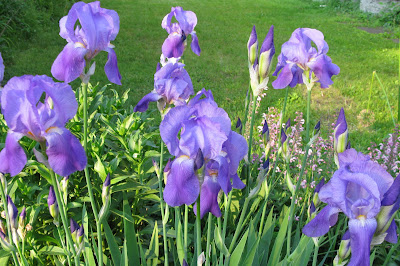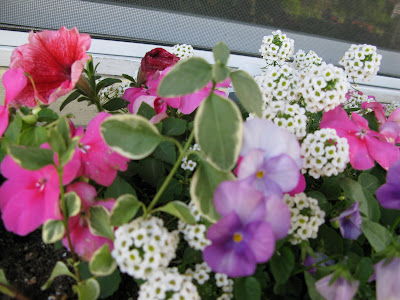



Change of seasons:
The weather has turned colder this week and it is definitely time to start the therapeutic but tedious task of putting the garden to bed for the winter. This is an opportunity to reflect on the season – I carry a small notebook to make notes of what did well and what didn't. I usually take photos of the plants during each month of blooming, which provides an accurate history of what has been planted and where it is located in the garden.
Weeding:
This is the time of year to get busy weeding the garden beds. Each weed that I pull from the roots will prevent the same plant from disbursing thousands of seeds that could multiply the weeds in the garden. I am also tidying up plant remnants from the garden and busily cutting back and, in some cases, transplanting healthy perennials to a more suitable location in the Peace Garden.
Gathering Seeds:
Start collecting seeds from the perennials - I store them in large used yoghurt containers and have also freely scattered others around the parent plant to encourage some to reproduce as nature intended.
If you stop deadheading the flowers by late summer this allows some seeds to form. I have thousands from the Echinacea, Monarda (bee balm), tansy, etc.
Winter Foliage:
While working around the garden cut back some of the plants and leave the plant remnants that have beautiful foliage (Sedum/Yarrow/ Echinacea/etc.) These will remain during the upcoming months and add interest during the winter until spring. They also provide wildlife food for the little critters in the garden.
Planting bulbs for springtime:
It is not too late to plant bulbs of daffodils and crocus for a beautiful display of spring flowers. Ideally bulbs should be planted as soon as possible, but they can be planted until the ground freezes. Tulips may be planted up until early November. To soften soil, water areas a couple days before planting also try bulb augers for easier planting. Select healthy, disease free bulbs. Make a sketch of planting locations.
– I have two happily mated squirrels that live in a tree on the tree belt in front of my house. Most of the time their life is spent busily running up and down trees and telephone wires, however, they are also busy digging holes to store the very plentiful supply of chestnuts that come from the tree that they live in. Because they are so busy and constantly disturbing the soil it becomes difficult to plant spring bulbs in the garden. The squirrels are determined and unstoppable.
Gladiolas, Dahlias and other tender bulbs should be dug up before the ground freezes, and stored in a cool, dark area. Dahlia and Begonia tubers should be stored in a box of slightly moist peat moss. Gladiola corms can be stored in a paper bag without additional packing.
Continue to mow lawn at 2 inches until grass is dormant.































